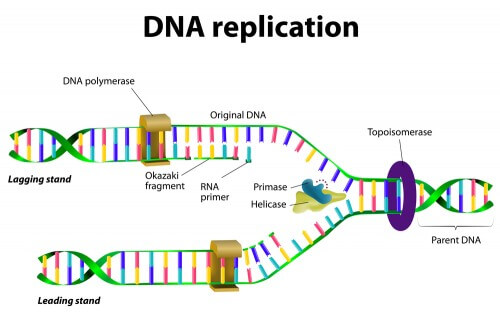Researchers have succeeded in developing an innovative method free of labeling materials for measuring amplified DNA in real time. The method measures changes in the refractive index of a laser beam passing through a liquid sample inside silica nanochannels.

[Translation by Dr. Nachmani Moshe]
Researchers have succeeded in developing an innovative method free of labeling materials for measuring amplified DNA in real time. The method measures changes in the refractive index of a laser beam passing through a liquid sample inside silica nanochannels. The high sensitivity of the method allows quantitative and accurate measurement of a wide range of DNA concentrations, from femto-molar (fM, 10-15 mols per liter) to pico-molar (pM, 10-12 mols per liter). The system could be used as a miniaturized and cheap method for medical diagnosis.
Polymerase chain reaction (PCR) is a simple and common method in molecular biology used for the replication of DNA segments into millions of copies. The method is important not only for basic research, but also in the fields of diagnosis, MZP and medicine. Quantitative real-time PCR is an adapted version that includes fluorescent labeling for the measurement of accumulated DNA, as opposed to monitoring it at the end of the process with the usual method. Therefore, the method allows accurate quantification of the original DNA. At the same time, existing methods may provide erroneous results due to errors in the sequences, inaccuracies in the equipment or non-uniform binding of the fluorescent materials. A team of researchers from Nagoya University in Japan has now developed an innovative method for real-time measurement of DNA without the use of labeling materials, that is, without the errors inherent in other methods. The research findings have long been published in the scientific journal Scientific Reports.
Existing methods without labeling materials are based on immobilizing target molecules on the surface, methods that are expensive, tedious and ineffective over time. In contrast, the new method measures the changes in the intensity of light reflected from a laser beam passing through nanochannels measuring 200 nanometers filled with the sample being tested in a liquid state. The laser beam is focused by lenses and then reflected after passing through a silica nanochannel and measured by a photodiode. "We used this method to demonstrate the first ever label-free detection of the human papillomavirus and the bacterium responsible for tuberculosis," said the lead researcher. "The method is very sensitive and allows the quantification of a wide range of DNA concentrations, from femto-molar (fM, 10-15 mols per liter) to pico-molar (pM, 10-12 mols per liter), thus it is more effective than existing methods."
"Our method also allows the measurement of replicated DNA segments at the relatively low temperature of 34 degrees Celsius without heating cycles," adds the researcher. "In light of the fact that the system has the potential to consist of a single chip and to measure sample volumes of one microliter, a volume 1000-100 times smaller than the volumes currently measured, it is particularly suitable for the development of a miniaturized system for diagnosing and detecting bacteria."

One response
There is a mismatch between the title and the content of the article
Why the need to give a home URL in order to respond? Not everyone has a website.